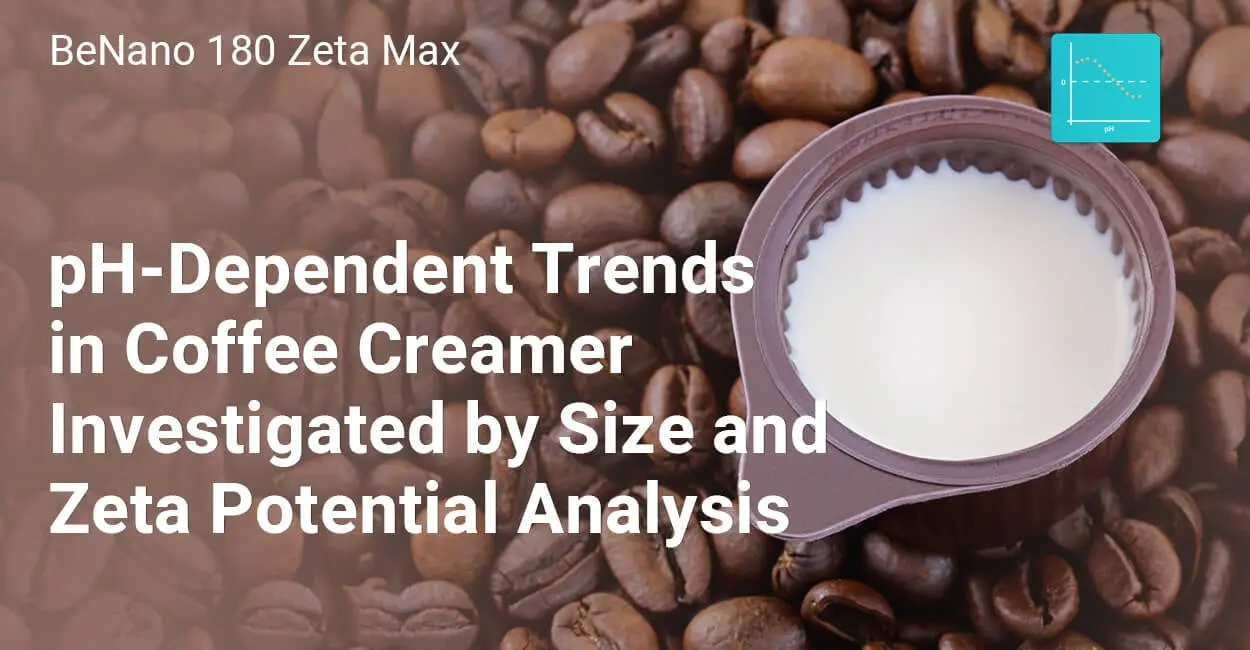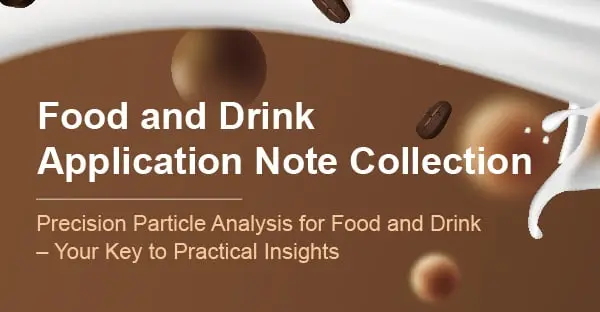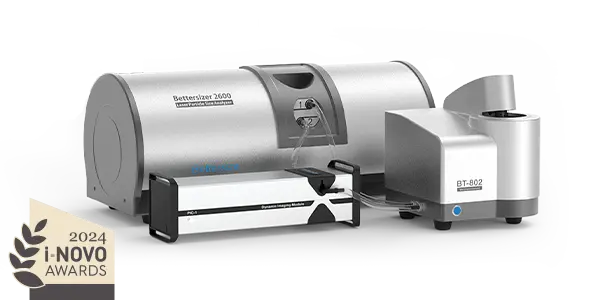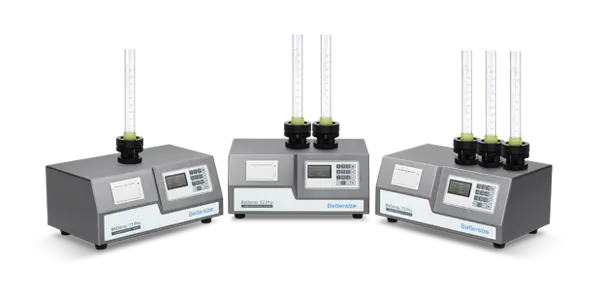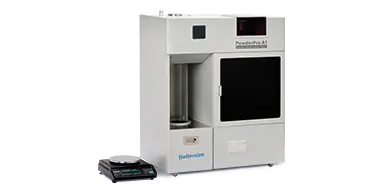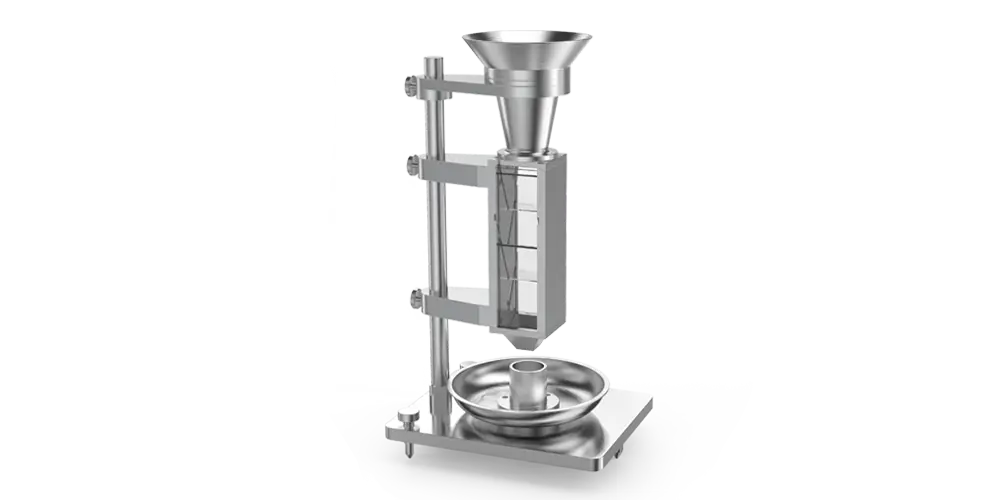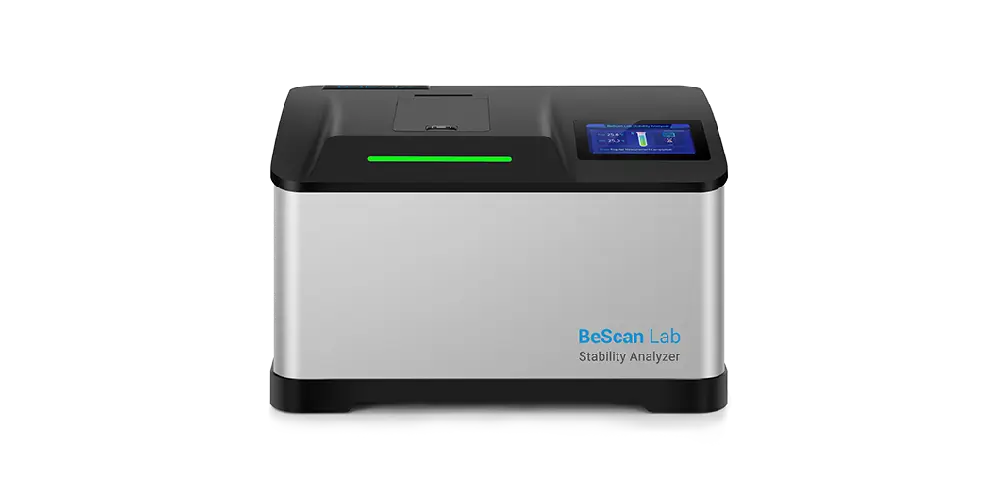Food and Drink Analysis
The particle size analysis of the food and beverage industry provides necessary data for improving quality and production efficiency. Therefore, particle size analyzer plays an important role in particle size analysis of food and beverage industry. Bettersize series particle size analyzers have been widely used in the food and beverage industry for their stable performance, high repeatability and accuracy in particle size measurement.
The performance of the food and beverage industry is closely related to the quality and safety of its products. Further challenges include organoleptic quality, guarantee period, stability, process stability and quality control. The morphology of food is various, including solid state, liquid state, powder, powders and viscous emulsions, and some food at the intermediate production stage is in a powder form. The particle size analyzer can provide scientific data to ensure that production in the intermediate and final stages can meet the standards, thereby providing scientific and effective quality control. The performance of the food and beverage industry is closely related to the quality and safety of its products. Further challenges include organoleptic quality, guarantee period, stability, process stability and quality control.
The morphology of food is various, including solid state, liquid state, powder, powders and viscous emulsions, and some food at the intermediate production stage is in a powder form. The particle size analyzer can provide scientific data to ensure that production in the intermediate and final stages can meet the standards, thereby providing scientific and effective quality control. Bettersize particle measuring systems meet the international standard with high accuracy, which has attracted great attention of customers in the food and beverage industry and has been widely used in the particle size analysis lab such as coffee and other products.
One example where tight particle size control is required is in the manufacture of chocolate. In the first stage, the nibs are ground into a thick paste called the chocolate liquor. The size of the particles in the chocolate mass is now about 100 microns. To avoid a grainy taste in the finished chocolate, another grinding takes place to reduce the particle size to about 18 microns as the tongue can sense grains of 18 microns or larger. If cocoa powder is being made, the chocolate liquor is further processed into pressed cake, and cocoa butter produced. The chocolate liquor or mass is put into hydraulic presses under extremely high pressure to drain off the clear, golden liquid cocoa butter. The press cake that is left is cooled, pulverized and sifted into cocoa powder. At this stage the chocolate liquor and other ingredients are kneaded together according to the kind and quality of the chocolate being made. The cocoa liquor is mixed with cocoa butter and sugar and this is further refined by reducing the particle size of the added milk powder solids and sugar down to the desired fineness.
The Cocoa powder or 'mass' is blended back with the cocoa butter (added to promote better mouth feel and reduce the viscosity) and liquor in varying quantities to make different types of chocolate. Lecithin, an emulsifier, which is much cheaper than cocoa butter $2577/ton (£1,577/ton) is also used to reduce the viscosity of chocolate and so reduces the amount of extra cocoa butter that must be added.
The ingredients can be churned together for hours. The resulting mixture is then dried to form a crumb which is ground with more cocoa butter in the next phase to make the thick chocolate crumb into a silky chocolate. This step reduces the particle size of the cocoa mass to 25 to 30 microns. The smoother the chocolate desired, the more time spent in the rolling mill.
No matter which solid, liquid or emulsion you use, the Bettersize particle size and particle shape analysis system can help you to:
● Rapidly test the particle size and particle shape of new formulations, and participate in new product development
● Optimize the powdering and pelleting process
● Control production and ensure the consistency of ingredients
● Participate in quality control and improve productivity and throughput
Citations
- Bettersizer 2600
Functional redundancy as an indicator for evaluating functional diversity of macrobenthos under the mussel raft farm near Gouqi Island
DOI: 10.1016/j.aquaculture.2023.740024 Read ArticleZhejiang Ocean University | 2024Biological traits analysis (BTA) helps to evaluate the effects of different environmental variables on the traits-based functional composition of macrobenthos. However, research on functional traits of macrobenthos under mussel farming is limited. We investigated the spatial and temporal response of the benthic system in terms of taxonomic and functional diversity to environmental variables of farming and natural stressors resulting from suspended mussel farming near Gouqi Island of eastern China Sea. The functional traits of macrobenthic assemblages under mussel farming were characterized by “medium adult body size”, “vermiform body form”, “high flexibility”, “infauna”, “semi-motile”, “gonochoristic”, “surface deposit-feeders”, “carnivores”, “semi-motile burrowers”, and “tube-dwellers”. Functional redundancy was stable in response to mussel farming stresses among seasons, whereas species diversity showed efficient to evaluate natural variables. Functional diversity was significantly affected by farming stressors rather than natural variables, Further analysis using multivariate methods together with continuous monitoring were highlighted to evaluate the impacts of mussel farming. Our results reinforce the importance of macrobenthic species and functional traits analysis to evaluate human stresses driven impacts in offshore ecosystems. By analysing the environmental variables with different sources, independently, we concluded the main effects of human pressures on macrobenthic community. Such distinction could be particularly effective to isolate variable environmental descriptors and evaluate their effects on functional diversity, making the current approach promising for the evaluation of ecological effects of anthropogenic stressors in aquaculture areas. - Bettersizer 2600
Degradation characteristics and utilization strategies of a covalent bonded resin-based solid amine during capturing CO2 from flue gas
DOI: 10.1016/j.seppur.2023.125621 Read ArticleChina University of Petroleum | 2024In this study, various types of degradation as well as attrition which are possibly encountered in a circulating fluidized bed temperature swing adsorption (CFB-TSA) process, were conducted experimentally to evaluate the stability of a resin-based solid amine sorbent. Other characterizations methods, such as elemental analysis (EA), Fourier transform infrared spectroscopy (FTIR) etc. were applied to further reveal the degradation mechanisms. The results showed that thermal degradation occurs from 140–160 °C due to the decomposition of amine group. The CO2-induced degradation occurs from a higher temperature of 160–180 °C accompanied by the production of urea. Hydrothermal stability is good below 130 °C, but the ionic impurities in steam crystalized on particle surface can accelerate the degradation. Oxidative degradation is the most harmful, which starts at a lower temperature of 70–80 °C with the formation of aldehyde. The existence of H2O in atmosphere can alleviate the oxidative and CO2-induced degradations. The employed sorbent has a very low attrition index of 0.05, which is 1–2 orders lower than typical commercial fluidized bed catalysts. Based on the results of stability evaluation, some design suggestions for proper utilization of this sorbent or other similar resin-based sorbents have been provided in an industrial CFB-TSA process.
- Bettersizer 2600
De-branching of starch molecules enhanced the complexation with chitosan and its potential utilization for delivering hydrophobic compounds
DOI: 10.1016/j.foodhyd.2023.109498 Read ArticleShihezi University | 2024The current study aimed to prepare the complexes between debranched-waxy corn starch and chitosan polymers (DBS-CS), and then investigated their corresponding structural characteristics, rheological property and potent application in Pickering emulsion. The results indicated that the existence of chitosan significantly inhibited starch short-range molecular rearrangement for all DBS-CS samples, which was manipulated by both debranching treatment and chitosan content. Interestingly, this is the first study to reveal that the outstanding peak at 1.8 ppm in 1H NMR spectrum for sample DBS-CS was gradually shifted towards a lower-field region following an increased chitosan content. Moreover, the debranching treatment shifted the crystallinity pattern from A-type to B-type and the relative crystallinity of DBS-CS decreased gradually with the increased content of CS. All samples had a pseudoplastic fluid and shear-thinning behavior with an enhanced shear resistance following the complexation. The DBS-CS was applied in a Pickering emulsion for showing a greater emulsifying stability and a lower gel strength than native NS-CS prepared emulsion. Importantly, the encapsulation ability of curcumin in the DBS-CS emulsion was significantly improved, followed by an increase of 15.45% for its corresponding bioavailability compared to the control. Therefore, this study might highlight a potential carrier for delivering the bioactive substances in a green pattern. - Bettersizer 2600
Heat-induced aggregation behavior of wheat gluten after adding citrus pectin with different esterification degree
DOI: 10.1016/j.foodhyd.2023.109420 Read ArticleGansu Agricultural University | 2024Wheat gluten aggregation during heat treatment is beneficial to the final quality of gluten-based products. Exogenous pectin can affect gluten aggregation. However, the effect of pectin with different degrees of esterification on the heat-induced aggregation behavior of gluten and its possible mechanism are still unclear. Thus, the heat-induced aggregation behavior of gluten after adding pectin with different esterification degree was studied in this study. When the temperature was raised from 25 °C to 95 °C, pectin affected gluten aggregation and was related to the degree of esterification. Specifically, the results of rheological properties and particle size indicated that low-ester pectin improved the viscoelasticity of gluten and promoted gluten aggregation. Thermal properties revealed that enthalpy of gluten added with low-ester pectin (37%) increased from 92.96 J/g to 95.40 J/g during heating process. Structurally, the fluorescence intensity and surface hydrophobicity of gluten added with low-ester pectin (37%) were lower than those added with high-ester pectin (73%). In addition, low-ester pectin (37%) significantly increased the disulfide bond content (from 15.31 μmol/g to 18.06 μmol/g) and maintained β-sheet content of gluten compared with gluten alone at 95 °C, indicating that low-ester pectin was more likely to induce gluten aggregation. However, scanning electron microscope showed that the gluten added with low-ester pectin (46%) exhibited a denser network structure at 95 °C than that added with low-ester pectin (37%). These results will provide a theoretical base for the regulation of gluten aggregation and the quality of gluten-based products by pectin with different esterification degree.
- 1
- 2
- 3
- 4
- 5
- 6
- 84
Curated Resources
Related Particle Size Analyzer
-
Bettersizer 2600
Particle Size & Shape Analyzer
Measurement range: 0.02 - 2,600μm (Wet dispersion)
Measurement range: 0.1 - 2,600μm (Dry dispersion)
Measurement range: 2 - 3,500μm (Dynamic imaging)
-
BeVision D2
Image Analyzer
Dispersion type: Dry
Measurement range: 30 - 10,000μm
Technology: Dynamic Image Analysis
-
BeDensi T Pro Series
Tapped Density Tester with a Wallet-Friendly Solution
Number of Workstations: 1-3
Tapping Speed: 100 - 300 taps/min
Repeatability: ≤1% variation
-
PowderPro A1
Powder Characteristics Tester
Operation Mode: Automatic
Tapping Speed: 50 - 300 taps/min
Repeatability: ≤3% variation
-
BeDensi B1-S
Scott Volumeter
Measurement: Bulk Density
Compliance with USP, Ph. Eur., ASTM, and ISO standards
-
BeScan Lab
Stability Analyzer
Particle size ranges from 10 nm to 1 mm
Volume fraction up to 95%
Compliance with ISO/TR 18811, 13097, 21357, 22107


